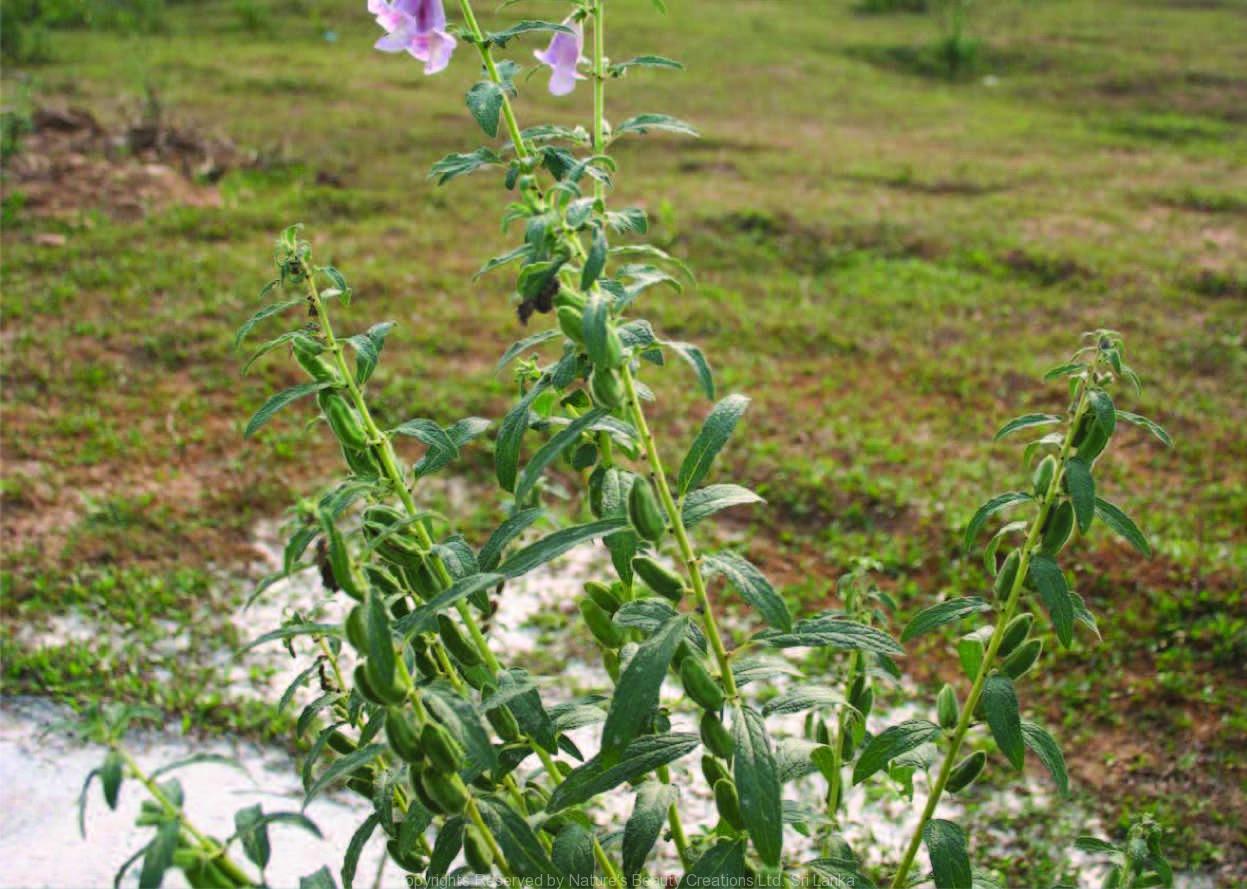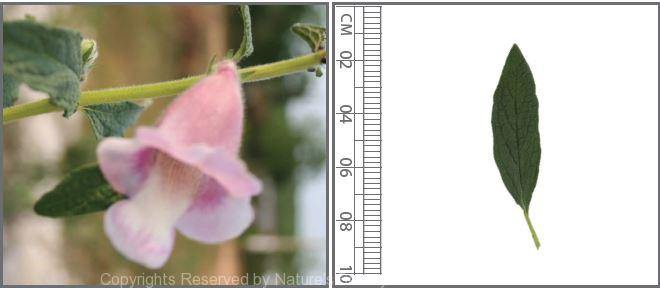

Traditional Knowledge
Useful plant parts :
Seed and leaf
Uses in traditional medicine :
- Paste prepared by grinding seeds is applied on burns
- Crushed young leaves are kept in a glass of water overnight to form a mucilage which is taken for diarrhoea
- Acts as a vermifuge and an aphrodisiac
- Used in the treatment of cough, cystitis, haemorrhoids lacteous, malaria, piles, strangury, ulcers, wounds, liniments to promote hair growth, purulent, catarrhal ailments, constipation, dysentery, gonorrhoea and stomach ailments
Scientific Research
Chemical constituents:
Anthraquinones: anthrasesamones A–C, chlorinated naphthoquinone pigment: chlorosesamone from roots; lignins: sesamol, sesamolin, sesamin and sesaminol from seed oil
Bioactivity :
Ethanol extract of seeds: antioxidative; sesamol: chemopreventive, wound healing and effective in UV-induced oxidative stress; seed oil: antihyperlipidaemic
Clinical:
Seed intake was effective in decreasing cardio vascular risk in diabetic patients and is a adjuctive therapy in knee osteoarthritis
Note :
Seeds are used to prepare foods
References : Bina E. S. et al., (2013), Effects of sesame seed supplementation on clinical signs and symptoms in patients with knee osteoarthritis, Int J Rheum Dis, 16(5), 578-82. Dar, A. A. and Arumugam, N., (2013), Lignans of sesame: purification methods, biological activities and biosynthesis–a review, Bioorg Chem, 50, 1-10. Furumoto, T. et al., (2003), Anthrasesamones from roots of Sesamum indicum, Phytochemistry, 64, 863–866. Hasan, A. F. et al., (2000), A new chlorinated red naphthoquinone from roots of Sesamum indicum, Bioscience, Biotechnology, and Biochemis- try, 64(4), 873-4. Mirmiran, P. et al., (2013), Ardeh (Sesamum indicum) Could Improve Serum Triglycerides and Atherogenic Lipid Parameters in Type 2 Diabetic Patients: A Randomized Clinical Trial, Arch Iran Med, 16(11), 651-6. Sedigheh, A. et al., (2013), Antihyperlipidemic effects of Sesamum indicum L. in rabbits fed a high-fat diet, Sharma, S. et al., (2006), Development and evaluation of sesamol as an antiaging agent, International Journal of Dermatology, 45, 200–208. Visavadiya, N. P. et al., (2009), Free radical scavenging and antiathero- genic activities of Sesamum indicum seed extracts in chemical and biological model systems, Food and Chemical Toxicology, 47, 2507- 2515.
Copyrights Reserved By
Natures Beauty Creations




